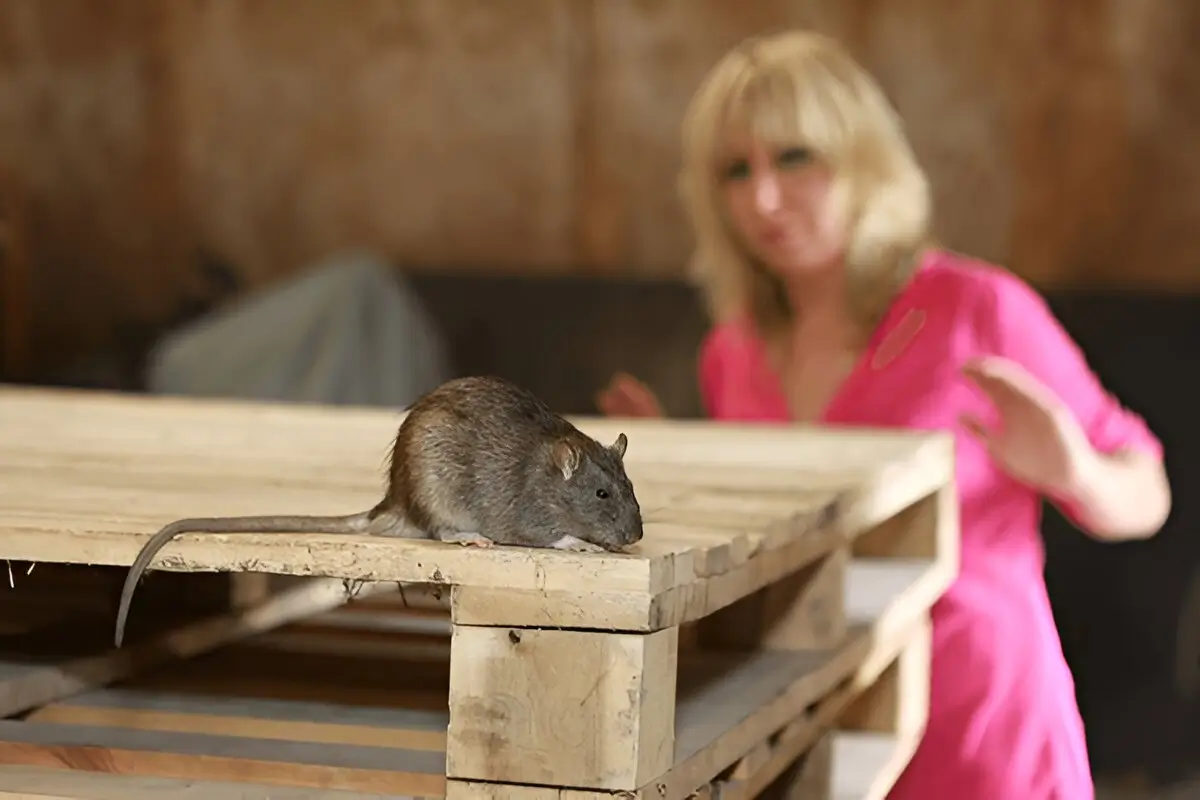If you live in Washington, D.C., you’re probably used to a few things: constant political chatter, heavy foot traffic around monuments, and unfortunately, the sound of scurrying paws in the alley at night. But how bad is the rat problem, really? Are D.C. residents cursed with one of the most rat-infested cities in America? Let’s dig into what makes the rat situation in D.C. so unique and why it’s something every resident has to navigate.

What Makes a City “Rat-Infested”?
When people think of a “rat-infested” city, they might picture endless trash piles or alleys teeming with rodents. But in reality, a city earns this label when residents consistently encounter rats in public and private spaces. From residential streets in Capitol Hill to dumpsters behind restaurants downtown, it feels like D.C. is crawling with these little critters.
So, Why Are There So Many Rats in D.C.?
Living in D.C., you’ll quickly realize that the city’s mix of old infrastructure, tourist crowds, and booming neighborhoods create the perfect playground for rats. Just think about the setup: we’ve got historic homes with basements that might as well have a “rats welcome” sign, and then there’s the dense clustering of cafes, restaurants, and food trucks. It’s a food buffet for our furry foes.
And then there’s the climate. D.C. winters have been a bit warmer in recent years, which means rats don’t go into their usual hibernation. So instead of a springtime spike in rat sightings, it’s now a year-round battle. It’s no wonder the city has such a hard time keeping these rodents under control.
The Rat Problem in Washington, D.C.: A Daily Reality
If you ask any D.C. local, they’ll have a “rat story” to tell. Whether it’s seeing a rat dash across the sidewalk on their morning walk or noticing gnaw marks on their trash can lids, it’s something we’ve all dealt with. For me, it was the time a rat scurried across my kitchen floor as I was cooking dinner. Let me tell you, nothing kills your appetite quite like seeing a rat where you prepare food!
A Brief History of DC’s Rat Infestation Struggles
Rats have been here a long time, and they’re certainly not new to D.C. Older neighborhoods like Georgetown and Capitol Hill have their roots in the 18th century, so it’s no surprise that these areas offer a perfect maze of hideouts. If you’ve ever walked through these neighborhoods and noticed a rat darting under an old set of stairs, you’re probably seeing the same lineage of rats that our city’s founders once dealt with.
Why Rats are Increasing in D.C.
The current surge in rat sightings isn’t just because of old buildings. D.C. is growing fast, with new apartments, restaurants, and commercial spaces popping up everywhere. Every time there’s construction, rats are disturbed and forced to look for new homes—sometimes right in our backyards or alleys. Plus, the trash from new eateries and busy streets? It’s an all-you-can-eat buffet for our unwelcome neighbors.
DC vs. Other Rat-Infested Cities: Are We the Worst?
D.C. isn’t alone in its rat issues. Cities like Chicago, New York, and Boston have their own reputations for rodent problems. Chicago, for instance, has topped the charts in rat sightings for years. But here in D.C., it certainly feels like we’re giving the Windy City a run for its money.
How DC Ranks in the Rat Race
D.C. has been climbing the ranks on lists of rat-infested cities, right behind the heavy hitters like Chicago and New York. The fact that we’re right there with these cities—despite our smaller population—says a lot about how hard this problem is hitting us. For D.C. residents, it’s not just an occasional nuisance; it’s a regular, unwelcome presence that reminds us to double-check our trash lids and inspect our basements.
What Makes DC’s Rat Problem Different
D.C. is unique because of its historic buildings and federal landmarks. Unlike newer cities, our infrastructure was built long before modern pest control methods were a thing. The cracks and gaps in our older homes are basically rat highways. And with so many visitors, the additional litter and food scraps make it hard for even the best sanitation workers to keep up.
Health Risks: Why DC Residents Should Care About the Rat Problem
Beyond the obvious “ick” factor, rats are a genuine health hazard. They carry diseases like leptospirosis and salmonella, and their droppings can trigger asthma and allergies. In short, it’s not just a matter of aesthetics—these critters can impact our health in significant ways.

Common Diseases Carried by Rats
Rats can spread diseases through direct contact, contaminated food, or even the fleas and ticks they bring along. Remember the time when I found a rat in my pantry? Besides the initial shock, my immediate worry was food contamination. Leptospirosis, hantavirus, and salmonella are some of the illnesses we risk when rats get into our homes. It’s why pest control isn’t just about peace of mind; it’s about protecting our families.
Rats in Daily DC Life: They’re Everywhere
Rats are known for chewing through everything from food wrappers to cables, causing not only a mess but also costly damage. I’ve heard horror stories from neighbors who had to replace their car’s wiring because rats gnawed through it. Just imagine waking up to find your car won’t start—all because a rat had a late-night snack on your engine wires.
Fighting the Rat Infestation in Washington, D.C.
It’s clear the city isn’t ignoring this issue. D.C. has put in place several initiatives, but keeping up with a fast-reproducing rat population is no small feat.
What D.C. is Doing to Control Rats
The city has stepped up its pest control programs in recent years. From installing rat-proof trash cans to increasing garbage collection in high-traffic areas, these are steps in the right direction. They’re also implementing more rodent control campaigns in hotspot neighborhoods, where rat sightings are through the roof. But as any D.C. resident will tell you, even these improvements only go so far.
What You Can Do to Keep Rats Away
As residents, there are some steps we can take to make our homes and neighborhoods less inviting to rats:
- Secure Your Trash: Rats can smell food from a mile away. Use tightly sealed trash cans and make sure you don’t leave food waste out overnight.
- Keep Outdoor Areas Clean: Sweep up food crumbs from outdoor tables, clean up after BBQs, and don’t leave pet food outside. Every bit helps.
- Seal Your Home: Walk around your home and look for any holes or cracks where rats could enter. If you see a gap, seal it up—especially around your basement and garage.
- Talk to Your Neighbors: Rat control is a community effort. If your neighbors aren’t securing their trash, it might be time for a friendly conversation. Rats don’t care about property lines, and a rat problem in one yard can quickly spread to the whole block.
Conclusion
At the end of the day, rats are more than just a nuisance in Washington, D.C.—they’re a part of daily life. Whether we’re checking our basements for droppings or nervously eyeing our trash cans at night, dealing with rats has become a routine reality. And while we might not have the top spot on the “most rat-infested cities” list, we’re definitely up there.
Living in D.C. has its perks, but rat encounters aren’t one of them. So next time you see a rat scurrying down the street, remember: you’re not alone in this battle. The entire city is working to keep these rodents in check, and with a bit of teamwork and vigilance, we can help keep them out of our homes and neighborhoods.
